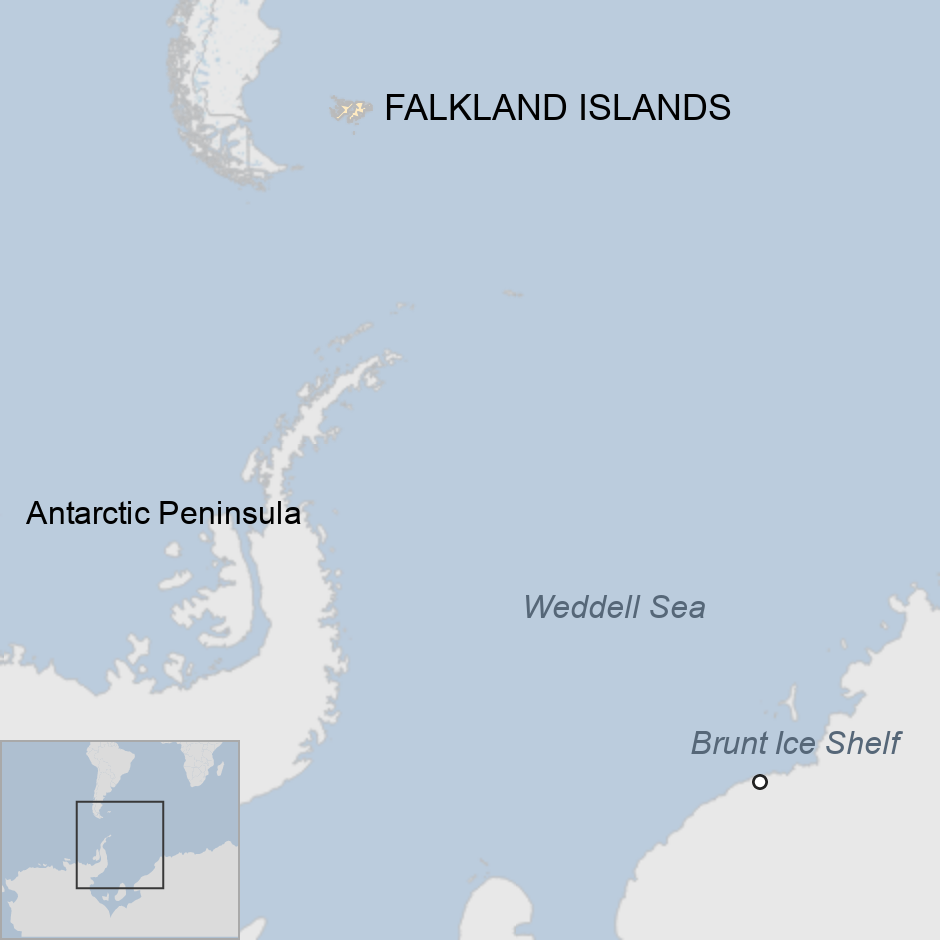Antarctic seafloor exposed after 50 years of ice cover
- Published
Antarctic beauty: Polarstern sitting between A74 and the Brunt Ice Shelf
Life gets busy wherever it can, even under thick ice cover in Antarctica.
German scientists have inspected an area of seafloor newly exposed by the calving of mega-iceberg A74 and found it to be teeming with animals.
Video cameras tracked abundant filter-feeders thriving among the soft muds.
It was a remarkable opportunity for the team as their ship, RV Polarstern, threaded the still narrow gap that exists between A74 and the Brunt Ice Shelf, which produced the giant berg.
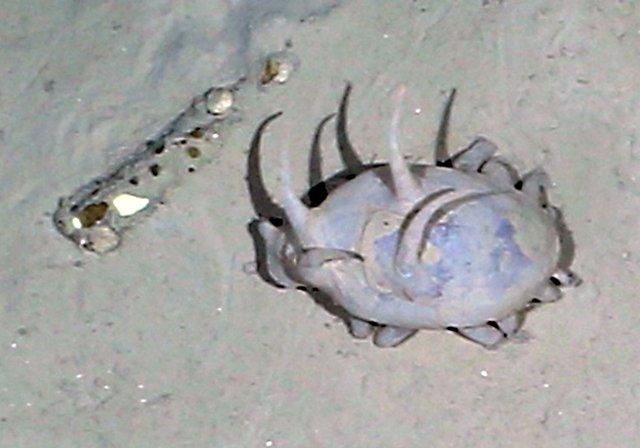
A seapig: These sea cucumbers were particularly abundant on the seafloor
Research groups frequently try to probe waters below freshly calved ice shelves, to better understand how these unique ecosystems operate. But success is not easily won.
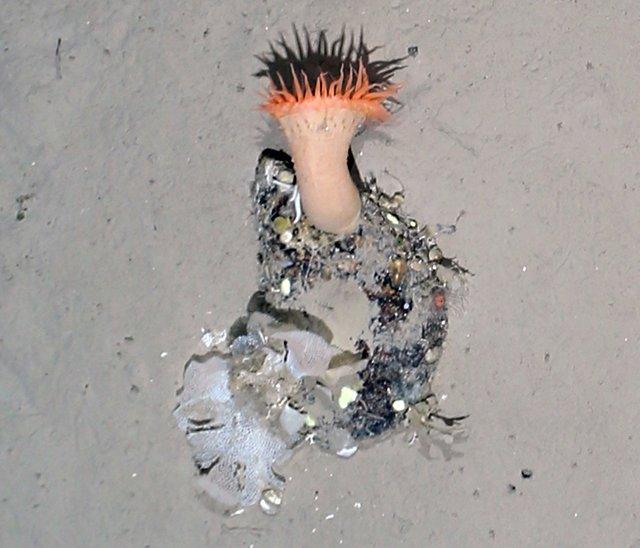
A large sea anemone shares a 10cm rock with a number of small, encrusting creatures
You have to be in the right place in Antarctica at just the right time, and often the sea-ice conditions simply won't let a research ship get into position above the target site.
But Polarstern, run by the Alfred Wegener Institute, external, got lucky. It was already in the eastern Weddell Sea on a pre-planned expedition when city-sized A74 split from the Brunt.
And when the weather calmed last weekend, the ship slipped in behind the berg to take a look at an area of seafloor that is now free of ice cover for the first time in five decades.
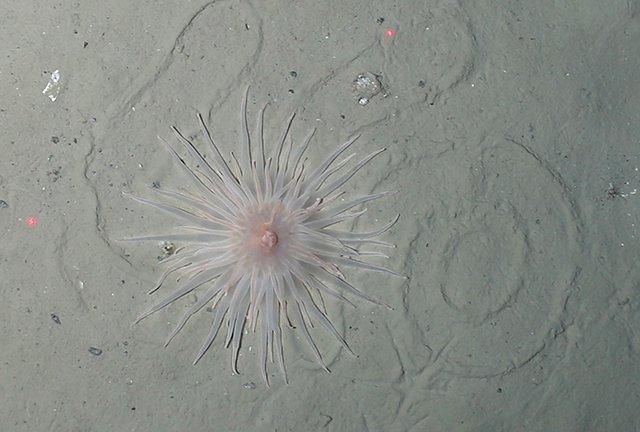
A beautiful anemone. The red dots are laser beams spaced 50cm apart to help size objects
Polarstern employs an Ocean Floor Observation and Bathymetry System (OFOBS). This is a sophisticated instrument package that is towed behind the ship at depth.
Over five hours, the system collected almost 1,000 high-resolution images and long sequences of video.
Dr Autun Purser describes the animals uncovered by iceberg A74's calving
"There was quite a lot of life on every single rock that's fallen out of this iceberg over time, as every single piece of hard substrate on the seafloor was colonised by slow-growing sponges, bryozoans - filter-feeding animals for the most part. That was immediately visible as soon as we put the camera sled down," OFOBS team-member Dr Autun Purser told the BBC's Science In Action programme on the BBC World Service.
"But then there was also a lot of mobile animals down there. Lots of sea cucumbers had come into the area, or were living in the area; also fish and octopuses.
"There's not much evidence of creatures living in the sediment - large creatures reworking the sediment. In the deep sea, you quite often see burrow structures. We didn't see very much of that under the ice."
Numerous animals were seen attached to small stones scattered across the seafloor
Dr Huw Griffiths from the British Antarctic Survey was thrilled to see the pictures sent back from the Polarstern.
"What they have found isn't shocking but it is amazing to get these images so soon after a calving event and it is definitely the largest area that will have been surveyed in this way," he commented.
"Finding this kind of community this far under the ice shelf is not surprising but it is a good indication that there is a rich supply of food reaching at least 30km under the ice shelf.
"This food is produced by plankton in the sunlit sea surface nearby, then dragged under the ice shelf by the currents of the Weddell Sea. These same currents will eventually move the iceberg westward around the Weddell Sea and then northwards to its doom," he told BBC News.

The OFOBS is lowered over the stern of the ship
From a research perspective, the idea would be to go back at regular intervals to document any changes to the ecosystem.
This is something Polarstern could do because AWI is conducting long-term studies in the region.
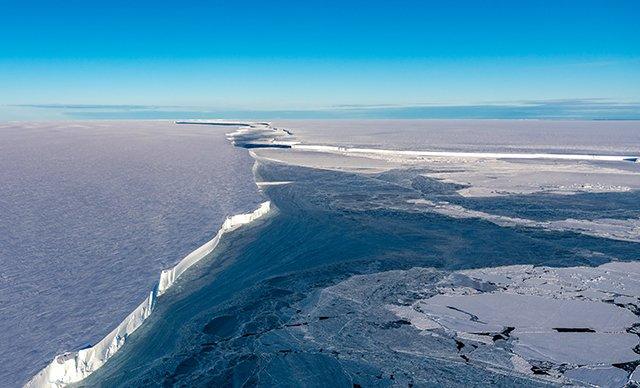
Polarstern navigated the gap between the berg and the ice shelf
The Weddell Sea's eastern side is interesting because it has not witnessed the warming effects that have been observed in its western sector, next to the Antarctic Peninsula.
This situation may not last, however, with computer models suggesting there could be regular incursions of warm ocean water from the north by the century's end.
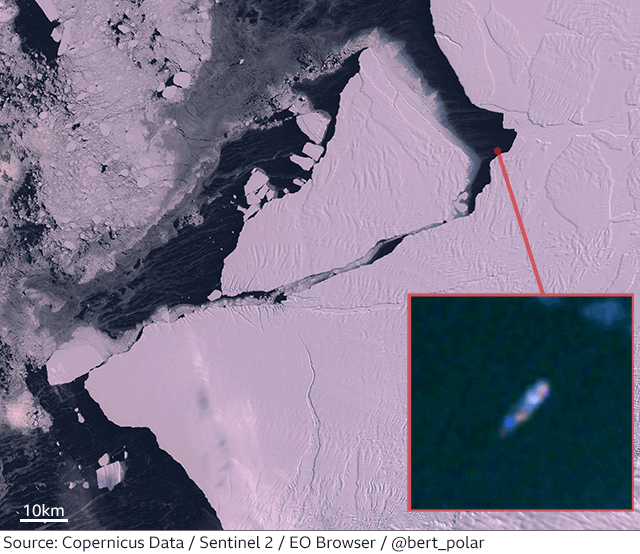
A weekend satellite image of A74 with a zoom-in on the Polarstern

Where is this in Antarctica?
A74 broke away from the Brunt Ice Shelf, which is the floating protrusion of glaciers that have flowed off the land into the Weddell Sea. On a map, the Weddell Sea is that sector of Antarctica directly to the south of the Atlantic Ocean. The Brunt is on the eastern side of the sea. Like all ice shelves, it will periodically calve icebergs. A big berg last calved from this particular area in 1971.
Just how big is iceberg A74?
Satellite measurement puts it at around 1,290 sq km (500 sq miles). Greater London is roughly 1,500 sq km; the Welsh county of Monmouthshire is about 1,300 sq km. That's big by any measure, although not as large as the monster A68 berg which calved in July 2017 from the Larsen C Ice Shelf on the western side of the Weddell Sea. That was originally some 5,800 sq km but has since shattered into many small pieces.
